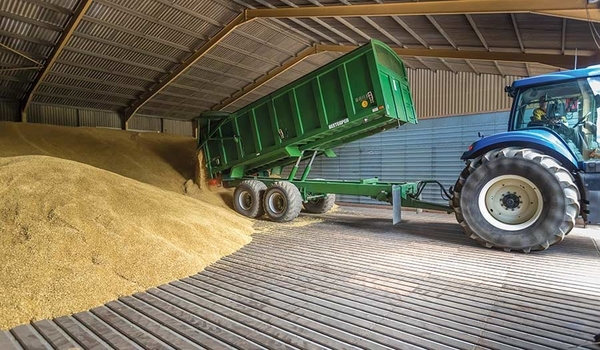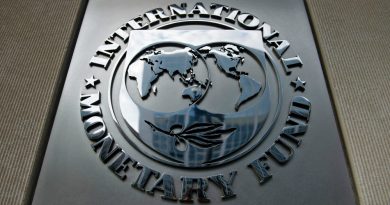Ukraine war: wheat prices soar as shortage deepens
Russia’s invasion of Ukraine less than two weeks ago has impacted the world supply of wheat as Russia and Ukraine account for 30 percent of the world’s supply of grain.
The US, the world’s number two producer, expects wheat yields to fall 10 percent this year, according to Gro Intelligence. In Canada, the world’s number three producer, yields plummeted 38.5 percent in 2021, according to Statistics Canada.
The Black Sea region exports 100,000 tonnes of wheat a day and a country like Australia does not have such facilities to export that much quantity.
Australia, which accounts for 10 to 15 percent of the global wheat trade, is also one of the few major grain-producing nations unaffected by last year’s drought in the Northern Hemisphere.
Australian wheat farmers are the top contenders to make up for the loss of grain from Russia and Ukraine, which normally accounts for one-quarter of the world’s annual wheat trade.
But supply chain bottlenecks, skyrocketing fertilizer prices, and tougher growing conditions linked to climate change present significant challenges to the Australian solution.
The Australian Bureau of Agricultural and Resource Economics and Sciences has predicted a record wheat crop of 36.3 million tonnes for the 2021-2022 financial year ending June 30 – 5 percent more than the previous year’s record harvest – due to above-average rainfall.
The EU is forecasting a 9 percent increase in usable production of common wheat. But it comes on the back of a 3 percent loss in the previous year and does not take into consideration potential disruptions in European trade as the war in Ukraine grinds on.
This perfect storm has seen the global price for wheat reach a 14-year high in recent days at a time when the economic fallout of the pandemic has already stretched household budgets.
It has also put at risk food security in low-income net food-importing nations like Egypt, which buys 70 percent of its imported wheat from Russia and Ukraine, and Lebanon, which gets 80 percent of its wheat from Ukraine.
In Western Australia’s Wheatbelt, a vast fertile plain in the state’s south the size of Tunisia, farmers are basking in what has been described as a once-in-a-generation harvest. Yields of two tonnes per hectare (about 2.5 acres) are considered a good result for the region. But this year the soils have yielded up to three times that amount.
Brett Hosking, chairman of GrainGrowers, said Australia is in a “unique position as a reliable source for grains.”
“Europe is constrained by energy supply and the potential for conflict is massive over there,” Hosking told Al Jazeera. “And I suspect that will be playing on the minds of any country wanting to purchase their grain. Canada has a massive rebuilding task should they have a good season this year.”
However, the bumper crop has created logistical challenges getting farm produce to port on trucks and trains. CBH, Western Australia’s largest grain-growing cooperative, is investing nearly $1bn in new and upgraded infrastructure. But far larger investments are needed to upgrade networks in other wheat-producing regions of Australia, according to industry figures.
“Sure, we can build more ports, but Australia is the land of floods and droughts. Last year, the harvest was fantastic but investors might say it is not worth putting in extra roads and rail facilities because in a few years we will go back to drought again. And I am certain nobody in Australia is going to build a new port because of the war in Ukraine.”
Supply chain bottlenecks are even more pronounced in Australia’s most populous state, New South Wales. GrainCorp, the state’s largest transporter and storer of grain, cut its fleet of a dozen trains in half following the 2017-2020 drought, the worst on record. But above-average rains over the past two years have turned things around for farmers.
“The growing conditions are very good and the forecast for the next harvest is looking good, too,” Ed Colless, a wheat farmer near Walgett in the north of the state, told Al Jazeera. “But the idea that Australia can fill the gap left by the war in Ukraine sounds good on paper – we simply do not have the export facilities to get additional wheat into the market in a timely fashion. In northern New South Wales, we can’t even bring last year’s crop to port. It may as well be on the moon.”
Another challenge for the Australian solution is the sky-high cost of fertilizer, which has been exacerbated by the invasion of Ukraine.
“Last year fertiliser cost $330 per tonne,” Colless said. “Now the price is tracking at $1,100 to $1,300 per tonne. And while it may be a global problem, if you’re a farmer in Western Europe considering increasing how much you sow, you can pay for fertilizer because it reflects the global wheat price of $315 per tonne. But the price for wheat in Northern NSW is only $215 per tonne because of the supply chain constraints.”
Russia’s wheat crop is not facing the same disruptions as Ukraine’s and sanctions do not currently target food exports. But three major shipping lines are already refusing to do business with Russia, and the war could bring about further disruptions.
“There will be parts of the world that will miss out on what this year,” said Hewitt, the South Australian grain trader. “But as the global price continues to rise, it will stimulate growers to sow more marginal lands and hopefully deliver a bigger crop.”
“It’s basic economics,” Hewitt added. “If you take out a quarter of global supply from Russia and Ukraine, the other 75 percent of producers, be they in Australia or elsewhere, are going to fill in the gap, even with higher fertilizer and energy prices.”
“People in Ukraine are in a disastrous situation and they’re fighting for their lives,” Arif Husain, chief economist at the World Food Programme, told Al Jazeera.
“But this disaster is beyond borders. It is also going to hurt people thousands of miles away.”
The war in Ukraine has left cash-strapped Lebanon scrambling for alternative sources of fuel and wheat.
Up to 90 percent of Lebanon’s wheat and cooking oil imports come from Ukraine and Russia, as well as a large proportion of grain imports. The fighting in Ukraine has engulfed the country’s southern ports, putting a stop to shipments, and imports from Russia have been hampered as a result of financial sanctions imposed on Moscow.
The impact means that Lebanon now has only one month’s wheat reserves left, deepening an already-existing food security crisis in the country.
Additionally, due to the sharp increase in global oil prices, official prices of fuel in Lebanon have increased by a staggering 33 percent since Russia’s invasion of Ukraine less than two weeks ago.
These ongoing developments have worsened Lebanon’s economic crisis, which has already pulled more than three-quarters of the country’s population into poverty and devalued the Lebanese pound by about 90 percent against the US dollar since August 2019. Lebanon’s food inflation is now among the highest in the world, with food prices rising by 1000 percent.
The impact of the war in Ukraine, on top of the preexisting situation, therefore threatens to bring more unrest to the country. The government is now seeking to avoid a repeat of last summer when public life in Lebanon was virtually paralyzed as long queues and rationing at petrol stations and grocery stores put the cash-strapped country on edge.
Mohammad Abou Haidar, the director-general of Lebanon’s Ministry of Economy and Trade, told Al Jazeera that the ministry’s Consumer Protection Directorate has carried out inspections of grocery stores, petrol stations, and bakeries across the country in an attempt to prevent illicit price hikes and hoarding by business owners.




